Little Crow: Ronin Scrawl
Wednesday, 22 February 2006
Originally posted in:


In a recent thread in the forum section, a poster delightedly quoted the wisdom of Isoyama Sensei regarding hakama, that "Until Shodan, must to see feet. After Shodan, no need to see feet." With all due respect, I can only wish that Isoyama Sensei did not make this statement because it illustrates a surprising lack of knowledge of Japanese history. Hakama are, essentially, riding culottes. Ordinary Japanese clothing was quite simple: men wore a fundoshi (loin cloth) and kimono, women a kimono with no undergarments. Horseriders (males, for women rode side-saddle, if at all) would be flashing "that which made them most mister" without a hakama to prevent them so flying the flag. In addition, unlike commoners, it would surely be considered unseemly for a bushi to flash his genitals or buttocks in any situation, including training. This was particularly true for women training in any athletic or martial pursuit.
There were formal hakama in which the hem covered the feet. Not being a researcher, I do not know all the reasons for this: among those claimed are that this restricted feet movements, making it more difficult to attack the daimyo in his palace. It may merely have been that nobility always becomes decadent, and this includes their clothing. Another example would be the absurd long-pointed slippers so popular in Europe at one point, the Freudian associations here all too easy to make.

Nonetheless, the hakama was usually meant to be functional. Too long a hem, and it would cover and tangle with the stirrups. Just as bad, the streets of medieval Japan, like those of Europe, were filthy. Too long a hem and the bushi would be trailing manure and other filth into the mansions and palaces where he worked. Thus, a hakama properly should never descend below ankle height. Not only should you ALWAYS be able to see the feet, but the ankles and perhaps even a little shin as well.
It somehow became a fashion within some aikido circles to wear a long hakama which covers the feet. Look at old pictures of O-Sensei, and you will find them as unfashionably short as John Stockton's tight little basketball shorts in an era of hip-hop style "baggies." That one so eminent as Isoyama Sensei is apparently unaware of this (and not merely scoring points on another, younger instructor who has students wear hakama from the first day) is surprising to me in one respect, but I have found aikidoka of every level, Japanese and foreign, quite unaware of their own cultural roots.
I must confess that even I was once so blind (yet now I see). When I got my shodan, I proudly bought, special-order, the longest hakama in the history of the Suidobashi budoya (can't remember the name). I went to Masuda Sensei's class, proudly planted myself in a broad seiza, front and center, so he'd see and call me out for the first technique. He comes in, says, "Oh, new shodan," and happily beckoned to me. Like a tiger, I leapt at him, and my toe catching in the hem, flew horizontally to do a face-plant right at his feet. He and 80 other people in the class were laughing so hard they were crying, and Masuda waved me away without a throw, still speechless with laughter. So truly, with all due respect to Isoyama Sensei, even after shodan, still "need to see feet."
This article was originally written by
Ellis Amdur for the
Aikido Journal and was used with permission.
Posted by kroh1
at 1:00 PM EST
Updated: Wednesday, 22 February 2006 1:10 PM EST

Monday, 13 February 2006
Some Throughts About Training
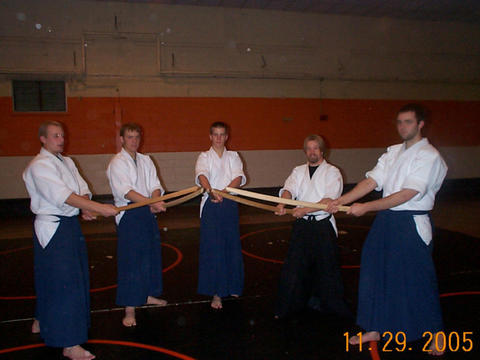
Fortunately, I have managed throughout my life to refrain for gaining too much knowledge pertaining to lumps... but I am vagely familiar with bumps... and bruises and aches and pains and very sore muscles from hours upon hours of practicing the Ken Suburi in the hopes that if I sweat enough and work hard enough I'll eventually pass out and during my state of euphoria I'll be visited by the Stupidity no Kami who will pass down a few divine secrets sort of similar to how Minamoto Yoshitsune was taught the secrtes of the sword by Sojobo, the Tengu King. I have been training for a while now and that still has yet to happen but perhaps one day.... you just never know.
Whether or not I am ever visited by a Kami or a Tengu or any other supernatural being is irrelevant. I will keep right on training day in and day out, month after month, year after year. This is Shugyo, training. Unfortunately for most people involved in the martial arts whether it be Aikido, Jeet Kune Do, Hapkido, Karate-do, a particular type of Koryu, or any other version that you can attach a name to, they never really get involved in Shugyo. They just practice. They come to class twice a week, learn what little they can and go home without a second thought about what they just did until the next class rolls around. This is very sad, I personally view it as tragic and a very great loss. All Sensei can do is hope that these students will keep coming back enough times to finally realize the benefits that are waiting for them if they choose to seek them.
I never was one of those students. From the first moment I set foot in the dojo I felt a very deep connection almost like gaining something in my life that was missing until that moment and that connection has only grown stronger over the years. Even so it has taken me quite a while to understand the importance of Shugyo, and I'm fairly certain that I'll never fully understand the scope or depth of this sort of training. You see, to me Shugyo isn't about just what happens in the dojo. It also includes everything that goes on in my life outside of the dojo. I believe that one should take the lessons that are taught in the training hall and apply them in every moment of your life. Lessons such as patience, respect, compassion, cooperation, honesty, not just with other people but with myself. Learning to be brutaly honest with myself was and is still one of the hardest things I have ever done, but it has allowed me to address many of my weaknesses and start out on the path to overcoming them. Being involved in Shugyo has allowed me to create some very deep friendships through my constant study of compassion and understanting of others' emotions. It has made me a better technician in the dojo because I have learned the value of slow practice and patience with others, and again honesty with myself. Instead of blaming uke for not falling correctly, I have learned to take responsability for my own mistakes and this has made a huge difference in the way I progress in the art. I literally took the job that I have now because I viewed it as a great oppertunity for me to continue in my Shugyo, my work is very political and public, I have to deal with people all day long, some friendly, some not so friendly. I try to approach each situation with the lessons of Aikido training in mind. Needless to say that I have made many mistakes but I continue to progress in the area of self control, it's just like a big key that has opened many, many doors.
I've read many books and articles and been involved in lots of conversations that talk about how the martial arts can change your life. I agree 100% But only if you take your training seriously, only if you allow it to become Shugyo. How can swinging a wooden sword around for hours and hours make you a better person. The fact is that it can't, not unless you approach the training with a good mindset. Practice with sincerity, in the hopes that learning to use the sword and learning how powerful it really is you'll never have to resort to unsheathing it. Practice your techniques with compassion in mind, understand that by learning to hurt people you can then choose not to.
Contribute your heart and soul to the ceremony at the beginning and ending of each practice, perform the etiquette as deeply sincere as you can possibly manage. Treat your partners as though you were responsible for their very lives and then give yourself to them completely. Take these lessons outside of the dojo and into your very being and become one of few who are really doing O-Sensei's Aikido.
This article was originaly posted to the Aikido Journal by JD Paul ( jdpaul@amigo.net ) and was reposted with permission.
Special thanks to the Aikido Journal. Please pay them a visit as they have an amazing site with a wealth of information.
Posted by kroh1
at 3:27 PM EST

Saturday, 14 January 2006
More From Guro Elmore
LACOSTE
KALI-ESKRIMA-SILAT-KUNTAW-BERSILAT-PANGAMUT-PANANT UKAN
12 STAGES OF SUMBRADA
1. 1 BLOCK - 1 HIT
2. HITTING BLOCK
3. 1 BLOCK 2 - 3 HITS
4. 1 BLOCK 2 - 3 HITS
A. NEGATIVE TO POSITIVE
HAGAD / LANSI TO TINUOD
THE USE OF ENGANIO AND ALGANGIAN
5. PUNYO Y PUNYO
A. WITH PUNYO ONLY
B. WITH DUNGOB ONLY
C. PUNYO Y PUNTA MIX
6. HUBUD WITH PUNYO AND PUNTA SUMBRADA
7. ENTRADA Y RETERADA
MOVING IN AND OUT OF LONG MEDIUM AND CLOSE RANGES
8. ADD TO CONTRA SUMBRADA
AGAW, KUNSI, BUNO, WALIS, BREAKS, THROWS, ELBOWS
PUNCHES, KNEES, TRIPS, ETC.
9. 1 BLOCK AND HIT LIMBS
10. USING DIFFERENT WEAPONS & RECEIVING DIFFERENT WEAPONS
11. ADD DIFFERENT ENVIROMENTS & COUNTER WITH DUMOG, WITH
OR WITHOUT WEAPONS.
12. SPARRING
A. NON-CONTACT
B. LIGHT CONTACT
1. MIDDLE & CLOSE QUARTER
2. LONG RANGE TO LIMBS AND HANDS
C. MEDIUM CONTACT TO ALL PARTS
D. MEDIUM TO HEAVY CONTACT W/ARMOR AND HEAD GEAR
E. HEAVY TO MEDIUM CONTACT (ARMOR MANDITORY) ALL ELEMENTS
Hope this helps you with your training.
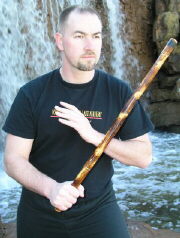
Guro Harley Elmore
Chief Instructor
Warriors Way International
Posted by kroh1
at 7:35 AM EST

Tuesday, 10 January 2006
LACOSTE
KALI-ESKRIMA-SILAT-KUNTAW-BERSILAT-PANGAMUT-PANANTUKAN
12 STAGES OF ABECADARIO 1. 1 BLOCK - 1 HIT
2. 1 BLOCK - 2 HITS
3. 1 BLOCK - 3 HITS
4. RECEIVE COMBINATION OF 2 HITS
5. RECEIVE COMBINATION OF 3 HITS
6. RECEIVE FAKES TO POSITIVE ATTACKS
7. A. USING DIFFERENT WEAPONS
B. RECEIVING DIFFERENT WEAPONS
C. USING DIFFERENT LOCKS
D. RECEIVING DIFFERENT LOCKS
E. USING DIFFERENT TAKEDOWNS
F. RECEIVING DIFFERENT TAKEDOWNS
STAGES 1 - 7 ARE DONE DE FONDO (STATIONARY)
8. RECEIVE WHILE RETREATING
9. RECEIVE WHILE MOVING RIGHT & LEFT
10. RECEIVE WHILE CIRCLING (CLOCKWISE&COUNTERCLOCKWISE)
11. RECEIVE LOW – HIGH AND HIGH – LOW
12. RECEIVE ON DIFFERENT TERRAINS, TRAINING ENVIROMENTS AND
SITUATIONS.

Guro Harley Elmore
Chief Instructor
Warriors Way International
Article reprinted from Warrior's Way International and used with permission.
Thank you
Regards,
Walt
Posted by kroh1
at 4:17 PM EST
Monday, 9 January 2006
Path of the Blade
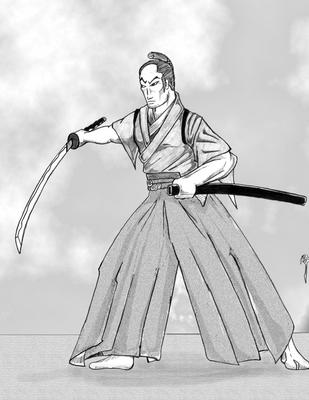
One of the things I like most about sword training is the fact that despite many of the injuries I get in practicing many other facets of the martial arts, I can usually still practice with the sword.
One of the things that people ask all the time is whay a man in this modern age would even practice with such an archaic weapon. No one uses one to fight with anymore and the closest that most of us will ever see to an actual killing weapon of this type is a machete. Knives are more practical and easier to carry without invoking a reaction of suspicion and dread. Firearms, while hard to obtain, are the most practical and modern form of weapon that anyone can carry (although the same reaction to carrying a sword might apply to a civilian carrying a firearm.).
So the question remains, why train with a weapon you will never use?
This is a question that happens to arise in a lot of the martial art systems stemming from places like Okinawa, Japan, and China. The martial arts still train weapons such as the sai, kama, and flail from Okinawa, the Abrir (a halberd style weapon) from Indonesia, and the Naginata (another halberd weapon) from Japan. The student often first undertakes the instruction in such weapons as a part of the training without question. After some time when the student is more familiar with what they are doing, they could then start to see the irrelevance of this weapon to their life and surroundings. After all, the halberd is a battlefield weapon from, what is now considered, ancient times and has no relevance in today’s world. Weapons like the nunchuku (flail) can be seen as still practical and easy to carry, however, since most of us are not rice farmers, the ability to get away with carrying such a device is limited (and in most places, illegal).
One of the facets of Japanese kenjutsu (sword methods) training is that is teaches
combative distancing. Distancing from an opponent is one of the four primary aspects of a correctly executed technique. By studying the sword’s application of distancing, you learn many things that come in handy when learning empty handed or even modern weapon combat. The first of these is
the ability to hit your opponent while being in a relative position of safety. This applies to melee weapons in terms of body position in relation to your opponent’s weapon. If he strikes out to you and you turn or move into a position where he cannot strike you unless he turns toward you, you are now in a better position to strike him. He has to turn to strike at you with his weapon and this application of distancing gives you some time (a breath or two) in order to execute your technique. This also applies to the empty handed martial arts as well. If an opponent moves to hit you and you step away from the line of attack, he now has to turn to hit you (in a manner that would cause damage. In many cases he can still hit you but the attack will be mostly ineffective. There is no power in the attack because of the way he is positioned, unless he turns). Granted, the person in an empty handed fight is closer, but the principle remains true, he has to apply correct posture to do any damage. If you move so he has to turn his body into a correct position, this still grants you the time you need to counter-attack.
Another combat distance principle taught by the sword is the concept of
ignoring the body. When one attacks another person in close range combat, something must be extended. If one’s spacing from their opponent is such that it allows for some movement, a person can zone out of the line of attack. This zone can allow the defender to attack the incoming wrist (or limb). This is often seen in kenjutsu when a person comes in with a wide sweeping cut and the defender zones away. A cut is then made to the incoming wrist before it breaks the plane of attack (the place where the wrist turns over and the blade is now in between the attacker and defender). IN iaijutsu (a method of drawing and attacking with the sword in the same motion), A similar method of attacking the limb comes into play when a person goes to draw his sword. The defender sees the man reach for his blade and steps out of the line of attack (once again maintaining good position and distance) and cuts the wrist before the attacker has a chance to draw the blade from its scabbard. This is the same for principles of combat apart from the sword. A person can throw a punch, and rather than simply blocking / parrying or moving out of the way, a person can
attack the attack and strike the incoming limb. This serves to deflect and damage the limb so that one has more “bang for the buck.” Thus, sword work proves that attacking the body is not the only way to finish a situation.
One final distance principle taught by the sword is the use of
deceptive distancing. This idea shows itself in many of the martial arts of Asia as well as being a staple in Western Boxing. The swordsman might lean a bit or show himself to be off balanced by having something too far forward or back. The person’s center is actually in balance and right where it should be yet he appears to be in the right place to have his attacker take advantage of him. This is seen often times where a fighter might lower his hands to show a false opening or have them in a non-threatening posture so as to make it seem like he is defenseless. This is a lure to bring an attack in by the opponent, which the defender has already planed for and intends to counter. The defender will either be in the right place to counter or will trick the attacker into striking the place where he appeared to be while he strikes from a position of “safety.” Another example of where deceptive distance comes into play is when the swordsmen are ready to engage (squared off), one common trick is to aim the tip of the blade at the other swordsman’s eyes. This takes away depth perception from the opponent’s point of view and makes it difficult to judge how far away the blade actually is. This trick, much like the first, is commonly used in hand fighting arts as well. A person will aim a strike at the opponents eyes just long enough to trick the depth perception into “loosing the distance” and when the opponent raises his defense to be sure, the exponent will alter the strike a bit to change the target into someplace unprotected.
In terms of combative distancing, the sword can teach many lessons. The sword has secured a place in modern martial tradition as a training tool for modern hand to hand combat. As long as people strike out against each other and still fight hand to hand, the sword will still be sought.
Regards,
Walt
Posted by kroh1
at 2:27 PM EST
Updated: Monday, 9 January 2006 4:02 PM EST

Friday, 6 January 2006
The end of an era...New Beginnings
They say that breaking up is hard to do.
At the end of November I decided to leave the school I have been with for the last eight years. I started at the
Derderian Academy of Martial Arts late in 1997. I was looking for instruction in the Filipino Martial Arts and I came across the DAMA add in the yellow pages. I was looking for this type of martial art as I had just gotten out of the Army and had trained in it for a year.
I went to the Academy and was also asked to partake in the Jeet Kune Do class as well. I did this for a few years and one day was asked to assist in a kid’s class for the Kempo system taught at the school. I started to help in the class on a regular basis and was soon invited to join the Kempo Class, which I cross ranked into (as I had rank from a previous instructor).
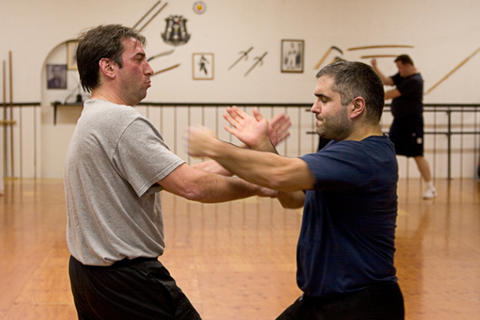
There are a lot of goals that I didn’t achieve while I was there and more than one I achieved that I didn’t expect. I didn’t get my black sash in JKD. A lot of people said to me that this was a shame. I really don’t see their point of view on this one. I received all the training that leads into that rank. I am well versed in the principles associated with that system. I have the training and the skill but no paper to back it up. No worries…If I ever need it I can always go back or train with some one else to get it. I don’t plan on opening up a school so that point is really moot. I love to train and Mr. Derderian was a great influence in this area…time well spent.
I also didn’t gain any official ranking in the Filipino Combatives program that was offered at the school. I love the Filipino Martial Arts. I find that they are the most dynamic of the martial arts that I have studied and are very practical in their application. It killed me that this program often fell by the wayside and was offered mainly to keep a few students that practiced them happy. I managed to gain a fairly comprehensive skill set while at the Academy and was able to see certain aspects of FMA combat that I lacked in the Family fighting system taught by my army buddy. The FMA’s were the main reason that I went to the Academy and it pains me to leave this program as well as Mr. Derderian is well versed in their methods. Once again, however, I was able to learn many aspects of the art and since I am not a rank hound…Time well spent.
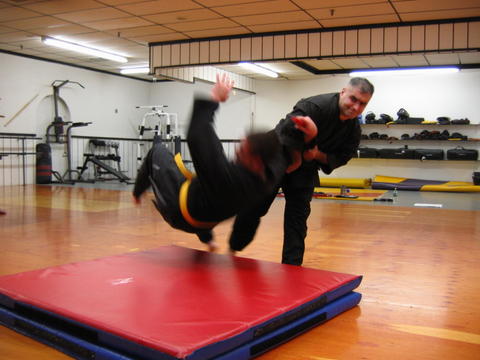
One of the areas I really didn’t go looking into was to garner another ranking in a kempo system. Mr. Derderian’s Kempo (The Shinko Ryu ) was a fairly well put together system that taught a combination of percussive and submittal techniques. Applications were designed to off balance the opponent and then dump him on the “deck” to either put him in his place or so that the exponent could escape. It seemed to be a well rounded blend of American Kempo (I have been observing some of the self defense methods appear in a lot of the other kempo systems in the area. The ones that I have observed seem to be either from the Parker of Cerio methods of Kempo and have only slight variations) and some of the Okinawan hand systems (often called kempo systems to reflect the Chinese influence on the method). There is a smattering of Japanese kansetsu waza inlfuencing the system that seems to be at times pillaging some of the concepts of aikijutsu while still retaining its kempo flavor. When I started I was very unimpressed with the system’s Okinawan kata and the lack of any progressive kata exploration. We did them in solo sets and every once in a while actually applied the methods by doing the kata with partners. Most of the theories in the katas ended up in the self-defense methods and thus were practiced that way. One of my friends who has just started practicing Wado Ryu Karate-do has been clueing me into some of the significance of the katas I have learned and thus they have really opened up for me. There is a lot more there (just like the Japanese kata I learned) than just the obvious and digging for a deeper meaning often revealed a diamond in the rough. I managed to ascend to the rank of Nidan in the system and feel like I accomplished something, as this is the first ranking beyond the basic transmission I have received. Time well spent.
A lot of people have been coming to me and asking me the magic question. “Now that you are no longer in the school, are you going to open your own?” I always look at them and answer with, “Why would I do that?” There is this strange notion that martial arts people when reaching their black belt magically transform into teachers. That is most definitely not the case. Martial arts people are just that. People trying to find out the truth about combat. They might find it in an Asian fighting method or in a Western one, but in either case, they are looking to do more than just punch and kick in a hostile situation. They are not born teachers and many that start to train never even make it to the basic level (shodan or black belt). Many who reach Shodan even start to teach (which would be like taking a high school student and sending them to teach high school right after they graduate). I have never had any intention to open up my own school. I have every intention to keep on training until my joints won’t allow me to. Let everyone else open up the schools, I just want to keep learning.
So that was my insights into my time training in the martial arts from 97-2006. After all this time, my experience at the Academy brought me back to the thought I had when I walked through the door. No matter what happens today, keep training and never get cozy. Complacency is tantamount to mediocrity. Those that are hungry have a tendency to excel while those that are comfortable have a tendency to “hold the course.” It was time to move on and it was time to get hungry again. I now have my business ( HAZARD Studio) back up and running and new classes to look forward to (although I can’t train to the extent I was when I first got back from the Army). It’s a great time to look into new things.
I wish all those that train at the Derderian Academy the best for 2006 and I look forward to training with them once again in the future (Because unless you are a real jerk, you never know how things will end up).
Regards,
Walt
Posted by kroh1
at 2:10 PM EST
Updated: Friday, 6 January 2006 2:14 PM EST

Monday, 3 October 2005
Observation: Movement and Timing
Topic: Cutting from the Wrist
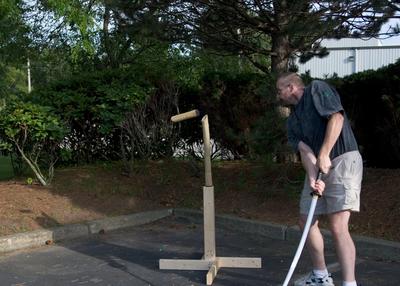
Movement and timing in combat can often be the difference between walking out or being carried out. The proper use of these tools can't be stressed enough for the person who wants to be more than just a brawler. These differences are often seen in the types of combatant that you see in the middle of a fight. It takes determnination and hard work to become a fighter... It takes all of the above and then some to become a strategist (martial artist). The difference is all in the details (and the details are there for anyone willing to look close enough).
Movement and timing always work together to mount a defense that will always look more like you're on the attack. A person who throws a punch and then ends up on the receiving end of one instead, is probably the victim of these kinds of tactics. Many times these tactics work best against stronger and tougher opponents who tend to go in with straight line attacks to take down their targets. It's very true that the shortest (and usually the easiest) path to a target is a straight line. That being the case, a person who moves out of the path of that line and counterattacks along a different one can usually turn the tide of the fight.
This isn't to say that taking the straight in route isn't going to work. There are going to be many times when one direct attack is all you need. There will also be times when you can let the other guy have the straight line so you can step out of the way and let him "bull" right past you. It's when he passes or lets his attack throw him off balance that you can use that "timing" to take him down.
Classic examples of this kind of timing and footwork are: the boxers slip, the zoning attack methods of the asian martial arts, and the elusive and methodical parries of fencing. All this add up to people realizing it is better to let the "bull" run past and attack from a flank.
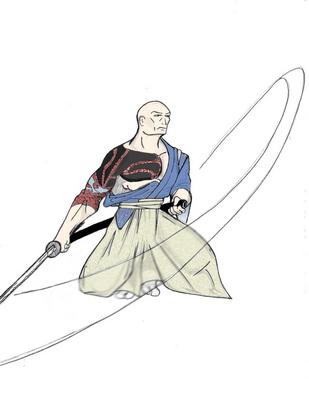
The classic mistake comes in when the timing is off. This can lead to getting caught in your own defense (whether it be being off balance or not able to turn in time to counterattack). Having the timing off and trying to move is just as bad as attacking with your eyes closed. You will not be ready to do what you need to when you need to do it. Just like in Chess, you need the right move for the right time.
Recently in my own training I have begun to see the need to move. We can apply this to any situation in training. Even in times when space is an issue or not letting your opponent know what you're doing (telegraphing), timing and movement can still come into play. One type of training I have been doing a lot of is maintaining balance and combat "composure" while being thashed against a corner or wall. Enviornment training is something that you don't see a big need for until you get trashed in a restaurant or bar when there are chairs and people and slippery floors...oh my. I was once told that the Romans and Greeks used to train thier soldiers in fields littered with debris so that they would be accustomed to steping over things in combat. This "wall" training is very close to to the same idea. A wall (or the ground) is an excellent striking surface for one opponent while an equally great surface for the other opponent to use for leverage.
In all this type of training, timing and movement are crucial to surviving the encounter as the winner. If the timing is off a bit you could end up greeting the wall in "uncomforatble" fashion. If the footwork is off, you won't have the necessary balance to drive the techniques to save your skin. In either case, you will be in for a hard lesson.
Just like in martial training, I have had several "lessons" lately in my other areas of life in regards to movement and timing. One aspect of life that has seeped in my training is the tendancy to linger some where I'm not supposed to be. Just like in fighting when you are pressing an attack and you stay on one line of attack for too long, a person becomes predictable and easy to counter. I've noticed that this has been happening in my training far to often lately. Time to get to work then...
Posted by kroh1
at 9:36 AM EDT

Tuesday, 5 July 2005
Ahhh...Fresh air
Topic: Cutting from the Wrist
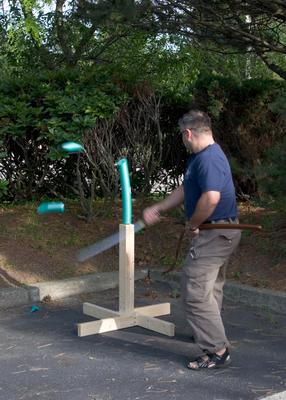
I love working out outside. You feel a lot more free than working in the conifines of an enclosed space. The other thing is that when working outside in a natural setting, you have stuff to trip over and un-even ground to contend with. Much more realistic than working inside a studio on flat ground.
Benefits of working out doors is there are also many more distractions to consider when facing your training. Cars passing by, people walking through your training area ( always fun when you are using bladed weapons ), animals that are upset you are training in their back yard ( still looking for that Racoon that took down one of my partners a few weeks ago )all contribute to keep one's mind off of the game and dangerously occupied. Not a good thing when some one is either swinging a fist or some other object at your head.
For the last few weeks we ( some of my cronnies and I )have been testing blades for the
Orochi Sword Store . We have received several models to test ranging from the basic models ( paul chen practical and practical plus ) to more exotic brands (such as Thaitsuki, Nahuarra, and the home brand of Mr. Graves' budding empire, the Oni Forge line). Of the models that I tested, the Oni Forge Folded model was clearly the best of the bunch. Sporting a well bellied sori (curve of the blade) and sublime edge, the Oni Forge Folded model ate through everything we whacked into. Several attempts to botch cuts with the blade yeilded little effect to it as it still bit deep into the targets. Examining the blade for after affect saw the edge nice and clean with no pock marks or dents from the cuts (semi-dried rolled straw mats with bamboo reeds in the center, a practice that is usually discouraged ). I would highly recomend to anyone looking to buy a Japanese sword with the intent of using it for cutting excersizes and martial arts practice to consider Mr. Graves as the source to go to for quality blades (with superior quality control) that fit every budget.
During the last cutting practice we did, i pulled out the companion sword (wakizashi) and decided to do some one handed cutting. The dynamics change just a bit when you loose the levered power of the second hand to help through the target. However, Loren had furnished me with a quality "side sword" and I made short work of the targets with little effort. As the blade was not being tested to see how bad I could wreck it, I put it through the targets with a mind to test my technique with the weapon rather than how bad I could bend the thing.
Working with a new sword group, I have been trying to clean up the technique that I have (which has rusted over the years due to a lack of training partners in the current school I attend as well as my own neglegence to test my technique). I really am enjoying the training I am receiving in the use of the wakizashi. I only have the very first form (which my form is terrible) but I am enjoying the two person applications of the weapon as well as trying to use it against oponents with longer weapons (such as the long sword, staff, spear, etc.). Good training.
My training in
Kali has recently taken some unexpected turns as my instructor came back (after a long absence to the class do to prior commitments) and has been showing us some typically good stuff. One item that registered on the charts was a series of limb destruction techniques for attacking an incomming appendage. Smash, crackle, pop are the order of the day as some one attacking you is either fed knuckle or elbow on the attacking limb to break rythm (and if we are lucky bone) to give us time to do what we do. I have also been practicing the motions of the destructions shown with a sharpee marker to accent the strikes. Striking with a closed hard pen has always been a favorite since I first saw it (why didn't I think of that before) and now I try to work it in whenever possible.
Also on the Kali front, I have been doing a lot of knife work with the aluminum trainer that I have and in response I feel that the added practice has been improving my skill in that area. I brought out the large and in charge dagger the other day and took some swings on suspended rolled targets to see if I either had a sharp knife and technique or a good Babe Ruth swing. Knife definately needs to be sharpend as I couldn't get it all the way in to the target without it swinging ( but I did send shards of the stuff into the parking lot).
My Kempo practice is starting to fustrate me a bit as I don't have training partners that are my level at the moment to really lay into. I have some partners that I can work with that allow me to build the muscle memory of slow partner work but as for doing the manuevers at combat speed with some one really trying to take off my head... it has been sorely lacking as of late. The problem is that every time some one gets close to the shodan level in the training they either quit or move (either away from the school or into the school; in which case like me...they have to now learn the system and rank in).
I don't see myself as a person who can only train with yudansha (ranked practitioners) and I am definately not a snob that only views hard technique as a way to train. But there are definately things that I am missing at the moment. Partnered weapon practice, kata application and variation, embugata (combative free style practice) and definately my favorite, NAGEWAZA (throwing another human being)are all elements of my training that I have been getting very little work in as our class size is small. This has led me to find those outside of our school to train in these aspects with. It is not easy in the area I am in to find those interested in combative martial arts training. The focus of the area is mostly competative arts and the "real deal" is getting harder to find as most of them are going uderground.
Oh well... Time to stop writing and start training.
Regards,
Walt
Posted by kroh1
at 1:57 PM EDT

Friday, 13 May 2005
Hands and Arms inside the Vehicle
Topic: Training
It seems that I sometimes suffer from that maddening disease known as
krazybusy. It is an affliction that affects millions of Americans every day and if left untreated...results in abject forgetfullness due to hysteria.
All kidding aside...as my other Blogg gets much more traffic as it is related to my business and thus, my web site... this one sometimes gets hit in the way side.
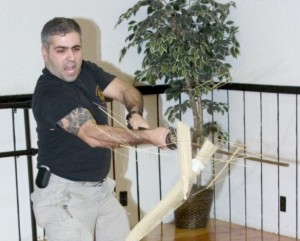
The good news is that I finally got done with my first test for Orochi Shinken Sword Store. The Test went well and the swords that he sent ( two of them "bargain blades" and a third that was rather high end) performed better than anticipated and the video we made went very well. The three students that performed the test with me had a blast as they had never cut with a sword before. The test (where they were concerned) was not for them to demonstrate excellent technique with a katana sword against a live target. It was faulty untrained technique that I was actually hoping for. I wanted to see how the sword would hold up against a "botched cut." Although I was looking, the three students with me did surprisingly well for never having done it before and put the sword through the targets with little effort.
Most of the cuts performed were performed with a diagonal cut from right to left. AS all were right handed ( as all swordsman in Japan are) this cut was something that we could flow from one cut to the next. The only one that really deviated from this structure was me as I wanted to see how the swords would handle bitting into the targets from different attack lines. The other reason that this cut was ideal is that the targets that I got were rather sub-standard for some reason and they did not have the rigidity needed to give a good solid cut. The targets had a tendancy to "flop" over for the first few strikes untill I untied them and rerolled them to make sure that they were a bit more snug. I am going to try ordering warra from
Mugen Dachi Targets from now one and hopefully get a better grade of matt.
IN the beginning I let everyone else warm up their "swing" with cuts against the foam pool noodles that you see in most department stores. I was turned on to this practice by a few friends who have Iai-to swords and can't cut real targets but want to check their form. The noodles are excellent for guaging your actual cut but the foam allows for mistakes as when you hit it (with an incorrect cut or a fake blade as in an iai-to) it will either get shaved or bend before getting knocked off the stand. Good stuff.
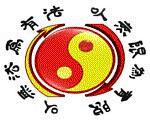
In other Kung fOoLeRy...I took a test in the art of Jeet Kune Do the other night. The test was for the last level before being considered for the rigourous Black Sash test. As always our instructor was true to form making sure we were mentally unblanced while taking our "quiz." There were no big surprizes and everything that was on the test sheet was also on the exam. But the way he goes about testing a person takes the same material that you have put in the time to refine and twists it on it's head so as to make you think about how "well" you really know it.
I was doing really well as the material I was being tested on was very ingrained and I have been working very hard to make sure that I "tow the line." I had really only two problems with the test. One of them was stamina. Since I started illustrating again. my time has been in short supply. I have even ordered stock in certain coffee companies to make sure that it flows freely to keep me awake (*wink*). The problem with this is that I have put on about 40 lbs and my "wind" is not what it used to be. All this has changed in the last month as I have become "fustrated" with my body and have been taking steps to change this. I have been running and working out a lot more on my own rather than wait for the one hour a day session that I play with almost every day at the academy.
The other area that fustrated me was unpredictabilty. During one of the fights of the test I accidently kneed my opponent in the face. He caught it full on in the teeth and it practically took him out for the night. I didn't feel to good about myself after that (not good to light up your training partner for real so he can't finish his test). But he managed to continue and finish out the night. Had he not been able to continue I would have failed on the spot. So now my Sifu (teacher) is making me sweat it out till later today until he posts the results.
After the results are posted I will continue to "run the gun" and make sure that my training is up to snuff so that I can be certified in Jeet Kune Do. Which will be very cool as it is a martial art that many profess to teach but few have the paper to back it up.
Thanks for listening...
Regards,
Walt
Posted by kroh1
at 10:14 AM EDT
Updated: Friday, 13 May 2005 1:57 PM EDT

Friday, 29 April 2005
And stays crunchy in milk
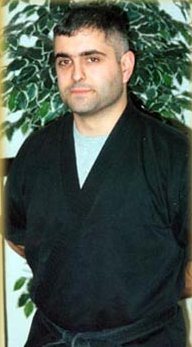
Training yourself to certain levels takes three very important aspects of the learning process. Understanding, repetition, and time. These three things are integral to ones understanding of martial sciences and ways. The problem with today's American martial artist is that they fail to do the most prime of these three... Understand.
American's by their nature are usually slow, lazy, and unmotivated. There are so many distractions in today's society that the only time some one gets motivated about something is when they either caught it on a NIKE add or on an episode of Opra. This has forged a once strong nation of doer's into a nation of cupcakes.
This mentallity has crossed into the martial arts world as well. Many instructors have gone the way of the professional teacher and made martial arts instruction their livelyhood. This is both a good and bad thing. For the "pro," a professional martial arts instructor has the time and energy to persue his chosen craft to a degree that a "part-timer" can't hope to match. They have the time to establish training regimens, build a sound structure, and make sure their students have the best quality training. The problem, is that since the instructors are not usually conected to a professional organization (LEO's, CO's, Millitary, Private Security, etc.)... this business usually only attracts "hobby entusiasts."
The "enthusiast" is one who has seen the martial arts and was motivated to join a class. This could be for many reasons. They perhaps saw a movie that displayed these skills, read about it in a book, or some how or other come across it. They walk into a school and hope to be accepted for training. This is where the problem for the professional instructor comes into play. Not wanting to turn down any business that would fund better training, the instructor accepts the walk ins. In many schools in many other countries that follow traditional martial practices, there is usually a "probation period" that allows the instructor to guage the student. The probation period is usually accompanied by having the student "interviewed" by the instructor prior to training, as well as furnishing the "how's" of how the student came to the school as well as a list of references.
This induction processes usually screened out the wannabe's from the will-be's and kept up a solid training enviornment. The probation period would also expose those that couldn't cut it and they would be weeded out of the program. Unfortunately, there are those that are not suited for martial instruction. They either do not have the capacity or are not willing to put in the time and effort it takes to get good at what they do. This not only produces a poor enviornment for the dedicated student but also creates a danger for the "new recruit". Poorly practiced techniques combined with training methods adjusted for the "hobby" mentality puts a potential student at risk. They practice poorly so they will perform poorly, sometimes with the false assumption that wearing funny pajamas while working out makes them untouchable.
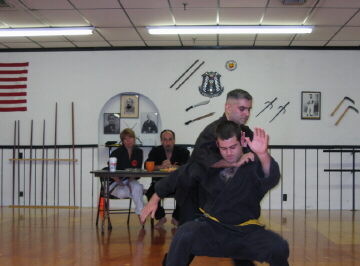
Martial training is hard. It should be in order to teach a person how to survive under adverse conditions. Those that aren't willing to put in the effort will invariably drag down those that are. It is up to the instructors of these classes to ensure they are teaching the "arts" for their intended...to take out the other person without remorse. In a real life or death struggle there isn't time for complex codes of morality or worrying about what might happen if you make it through.
Should the average person have access to martial training... absolutely. Should they also understand that average training could get you hurt (or far worse) when it comes time to use those skills for real... absolutely.
Soccer mom's, day traders, and the occaisonal troubled teen should have access to this training, but the instructor should not be surprised when the rest of his student body is fed up with the tantrums or need to be "recognized and built up" and take steps to avoid the "trouble" that has hit the training room floor.
Regards,
Walt
Posted by kroh1
at 8:42 AM EDT

Newer | Latest | Older

 In a recent thread in the forum section, a poster delightedly quoted the wisdom of Isoyama Sensei regarding hakama, that "Until Shodan, must to see feet. After Shodan, no need to see feet." With all due respect, I can only wish that Isoyama Sensei did not make this statement because it illustrates a surprising lack of knowledge of Japanese history. Hakama are, essentially, riding culottes. Ordinary Japanese clothing was quite simple: men wore a fundoshi (loin cloth) and kimono, women a kimono with no undergarments. Horseriders (males, for women rode side-saddle, if at all) would be flashing "that which made them most mister" without a hakama to prevent them so flying the flag. In addition, unlike commoners, it would surely be considered unseemly for a bushi to flash his genitals or buttocks in any situation, including training. This was particularly true for women training in any athletic or martial pursuit.
In a recent thread in the forum section, a poster delightedly quoted the wisdom of Isoyama Sensei regarding hakama, that "Until Shodan, must to see feet. After Shodan, no need to see feet." With all due respect, I can only wish that Isoyama Sensei did not make this statement because it illustrates a surprising lack of knowledge of Japanese history. Hakama are, essentially, riding culottes. Ordinary Japanese clothing was quite simple: men wore a fundoshi (loin cloth) and kimono, women a kimono with no undergarments. Horseriders (males, for women rode side-saddle, if at all) would be flashing "that which made them most mister" without a hakama to prevent them so flying the flag. In addition, unlike commoners, it would surely be considered unseemly for a bushi to flash his genitals or buttocks in any situation, including training. This was particularly true for women training in any athletic or martial pursuit.  Nonetheless, the hakama was usually meant to be functional. Too long a hem, and it would cover and tangle with the stirrups. Just as bad, the streets of medieval Japan, like those of Europe, were filthy. Too long a hem and the bushi would be trailing manure and other filth into the mansions and palaces where he worked. Thus, a hakama properly should never descend below ankle height. Not only should you ALWAYS be able to see the feet, but the ankles and perhaps even a little shin as well.
Nonetheless, the hakama was usually meant to be functional. Too long a hem, and it would cover and tangle with the stirrups. Just as bad, the streets of medieval Japan, like those of Europe, were filthy. Too long a hem and the bushi would be trailing manure and other filth into the mansions and palaces where he worked. Thus, a hakama properly should never descend below ankle height. Not only should you ALWAYS be able to see the feet, but the ankles and perhaps even a little shin as well.



 One of the things I like most about sword training is the fact that despite many of the injuries I get in practicing many other facets of the martial arts, I can usually still practice with the sword.
One of the things I like most about sword training is the fact that despite many of the injuries I get in practicing many other facets of the martial arts, I can usually still practice with the sword. 

 Movement and timing in combat can often be the difference between walking out or being carried out. The proper use of these tools can't be stressed enough for the person who wants to be more than just a brawler. These differences are often seen in the types of combatant that you see in the middle of a fight. It takes determnination and hard work to become a fighter... It takes all of the above and then some to become a strategist (martial artist). The difference is all in the details (and the details are there for anyone willing to look close enough).
Movement and timing in combat can often be the difference between walking out or being carried out. The proper use of these tools can't be stressed enough for the person who wants to be more than just a brawler. These differences are often seen in the types of combatant that you see in the middle of a fight. It takes determnination and hard work to become a fighter... It takes all of the above and then some to become a strategist (martial artist). The difference is all in the details (and the details are there for anyone willing to look close enough). 
 I love working out outside. You feel a lot more free than working in the conifines of an enclosed space. The other thing is that when working outside in a natural setting, you have stuff to trip over and un-even ground to contend with. Much more realistic than working inside a studio on flat ground.
I love working out outside. You feel a lot more free than working in the conifines of an enclosed space. The other thing is that when working outside in a natural setting, you have stuff to trip over and un-even ground to contend with. Much more realistic than working inside a studio on flat ground.  The good news is that I finally got done with my first test for Orochi Shinken Sword Store. The Test went well and the swords that he sent ( two of them "bargain blades" and a third that was rather high end) performed better than anticipated and the video we made went very well. The three students that performed the test with me had a blast as they had never cut with a sword before. The test (where they were concerned) was not for them to demonstrate excellent technique with a katana sword against a live target. It was faulty untrained technique that I was actually hoping for. I wanted to see how the sword would hold up against a "botched cut." Although I was looking, the three students with me did surprisingly well for never having done it before and put the sword through the targets with little effort.
The good news is that I finally got done with my first test for Orochi Shinken Sword Store. The Test went well and the swords that he sent ( two of them "bargain blades" and a third that was rather high end) performed better than anticipated and the video we made went very well. The three students that performed the test with me had a blast as they had never cut with a sword before. The test (where they were concerned) was not for them to demonstrate excellent technique with a katana sword against a live target. It was faulty untrained technique that I was actually hoping for. I wanted to see how the sword would hold up against a "botched cut." Although I was looking, the three students with me did surprisingly well for never having done it before and put the sword through the targets with little effort. 
 Training yourself to certain levels takes three very important aspects of the learning process. Understanding, repetition, and time. These three things are integral to ones understanding of martial sciences and ways. The problem with today's American martial artist is that they fail to do the most prime of these three... Understand.
Training yourself to certain levels takes three very important aspects of the learning process. Understanding, repetition, and time. These three things are integral to ones understanding of martial sciences and ways. The problem with today's American martial artist is that they fail to do the most prime of these three... Understand.